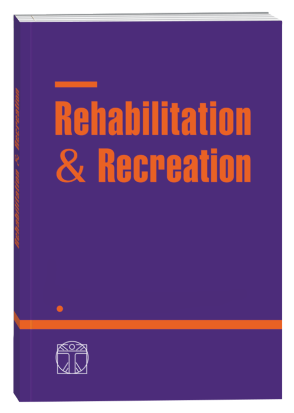THE EFFECTIVENESS OF THE TREATMENT AND PREVENTION COMPLEX IN THE MANAGEMENT OF PREGNANT WOMEN WITH HYPERTENSIVE DISORDERS AND THE RISK OF DEVELOPING GESTATIONAL HYPERTENSION AGAINST THE BACKGROUND OF VEGETATIVE DYSFUNCTION AND DISORDERS OF THE PSYCHO-EMOT
DOI:
https://doi.org/10.32782/2522-1795.2023.15.16Keywords:
arterial hypertension, daily blood pressure profile, autonomic dysfunction, psychosomatic state disorder.Abstract
Purpose: to investigate the impact of the developed therapeutic and preventive complex in the management of pregnant women with hypertensive disorders and the risk of developing gestational hypertension against the background of autonomic dysfunction and psychosomatic state disorders. Methods. 172 pregnant women with hypertensive disorders with comorbid autonomic dysfunction and disorders of psycho-emotional state were examined in the inpatient conditions of the city clinical perinatal center and Halytska district hospital. Pregnant women were divided into two groups: the first (1 and 11) and four subgroups (1A and 11A, 1B and 11B). The 1st group included pregnant women with mild and moderate hypertensive disorders. Women with severe hypertension were not included in the study due to insufficient number of subjects (n=6). The second group consisted of pregnant women with risks of developing gestational hypertension. Subgroups 1A and 11A include pregnant women who, in addition to standard therapy, were prescribed a treatment-prophylactic complex, which included medications, psychocorrection and physical therapy. Pregnant women of subgroups 1B and 11B received standard therapy. The control group consisted of 35 women with a physiological course of pregnancy. Measurements of office blood pressure and DMAT were used to solve research problems. The results. It was established that on the 30th day of using the treatment and prevention complex in subgroup 1B, the daily profile of blood sugar normalized in 58 (84.05%) pregnant women, which was 32.73% higher than the corresponding data in subgroup 1A. In pregnant women of subgroup 11B, a decrease in average daily blood pressure by 11.6% to (115.3±3.3) mm Hg was observed. Art. (р<0.05) and average daily dAP – by 4.83% to (76.68±3.2) mm Hg. Art. (p>0.05), at the same time, pregnant women of subgroups 1A and 11A, who were under routine observation and treatment according to the order of the Ministry of Health of Ukraine No. 151 dated 01.24.2022 "Hypertensive disorders during pregnancy, childbirth and the postpartum period", did not occur probable decrease in average daily SBP and dBP (p>0.05 for both subgroups). We noted a similar tendency to lower blood pressure indicators in relation to average daytime SBP, average daytime dBP, average nighttime SBP, and average nighttime dBP. When comparing indicators of other DMAT profiles, it was established that differences in most BP parameters were observed between the compared subgroups of pregnant women. Thus, the levels of the SBP time index during the day in women of the 1B subgroup were (16.30±4.2)%, which is 38.44% less than the initial data, the SBP time index at night – (14.60±4.4 )%, which is also 26.44% less than the previous indicators, in patients of the 11B group – (14.20± 6.2)% and (12.20±6.4)%, respectively, which indicated the normalization of the daily index and corresponded to the normal circadian rhythm (dippers). At the end of treatment in subgroup 1B, the number of "hyper-dippers" decreased by 39.13%, "non-dippers" – by 6.9%, on the other hand, the share of "dippers" increased by 49.27%. As a result of the treatment in subgroup 1B, the daily blood pressure profile normalized in 58 (84.05%) pregnant women, which was 15.7% higher than the corresponding data in group 1A. This happened due to a decrease in the share of "hyper-dippers" by 57.2% and "non-dippers" by 19.0% in group 1B, p<0.05. In patients of subgroup 11B, the cAT time index during the day decreased by 24.38% to (24.20±6)%, the cAT time index at night decreased by 28.73% to (32.20±6.4)%, which is significant differed the data in group 11A and indicated the absence of positive dynamics in the normalization of the pressor effect of BP. At the same time, the average indicators of DI cAT at the end of treatment were (15.6±2.1)%, and for dAT – (15.6±2.1)%. However, patients of the 1B subgroup had an increased variability of blood pressure during the day – by 27.8% to (13.3±0.52) mm Hg. century, in pregnant women of the 11B subgroup – by 19.80% to (12.1±0.5) mm Hg. Art. (p<0.05 for both groups), which indicates a possible risk of cardiovascular events, as well as preeclampsia, which in the future requires dispensary supervision, lifestyle correction, drug treatment and blood pressure control during pregnancy for this category of pregnant women, childbirth and in the postpartum period. Conclusions. The use of the developed and implemented therapeutic and preventive complex reliably improves the daily rhythm of blood pressure, increases the proportion of pregnant women with a "dipper" daily curve, which indicates the effectiveness of the proposed complex in pregnant women with hypertensive disorders or pregnant women at risk of developing gestational hypertension. The study of DMAT indicators in pregnant women has both diagnostic and prognostic value, and its study is appropriate in the specified category of pregnant women.
References
Камінський В.В., Ткачук Р.Р., Геник Н.І., Герич П.Р., Стримбіцький В.В. Вегетативні та психосоматичні розлади у жінок під час вагітності. Сімейна медицина. 2018. № 3 (77). С. 129-138.
Камінський В.В., Ткачук Р.Р. Особливості психоемоційного стану вагітних на фоні вегетативної дисфункції. Збірник наукових праць співробітників НМАПО імені П. Л. Шупика. Київ, 2018. Випуск 30. С.120-138.
Камінський В. В., Ткачук Р. Р. Оцінка ефективності корекції вегетативних розладів та психоемоційного стану вагітних. HEALTH OF WOMAN. 2018. № 9(135). Р. 73-80; doi 10.15574/HW.2018.135.73.
Камінський В.В., Ткачук Р.Р. Diagnostic of psychosomatic disorders during pregnancy (Діагностика психосоматичних розладів під час вагітності). Репродуктивне здоров’я. 2018.8 (4). Р. 479-491.
Наказ МОЗ України від 24.01. 2022 № 151 «Про затвердження Уніфікованого клінічного протоколу первинної, вторинної (спеціалізованої) та третинної (високоспеціалізованої) медичної допомоги «Гіпертензивні розлади під час вагітності, пологів та у післяпологовому періоді» – https://www.dec.gov.ua/ mtd/gipertenzyvni-rozlady-y-vagitnyh/
Рудик Ю.С. Профіль артеріального тиску non-dipper: клінічні наслідки та можливості моксонідину. Медична газета «Здоров’я України 21 сторіччя». 2022. 3 (520), С. 3-5.
Ткачук Р.Р., Камінський В.В. Дослідження стану вегетативної регуляції під час вагітності. 2018. 1 (19). Р. 35-40.
Ткачук Р.Р., Камінський В.В. The gestational process in pregnant women with disorders of the heart rate variability. World Science. 2018. Vol. 35 (4). P. 74-81.
Шеремет М.Ю. Особливості циркадного ритму артеріального тиску у пацієнтів з резистентною артеріальною гіпертензією та псевдорезистентною артеріальною гіпертензією. Буковинський медичний вісник. 2018. 3 (87). С. 117-123.
Uniitzer J., Harbin H., Schoenbaum M., Druss B. (2013) The collaborative care model: An approach for integrating physical and mental health care in Medicaid health homes. Health Home Information Resource Center, 1-13.
Anwar N., Kuppili P.P., Balhara Y.P.S. (2018) Depression and physical noncommunicable diseases: the need for an integrated approach. WHO South-East Asia. Journal of public health, 6(1). Р. 12-17
Downloads
Published
How to Cite
Issue
Section
License

This work is licensed under a Creative Commons Attribution-NonCommercial-NoDerivatives 4.0 International License.












